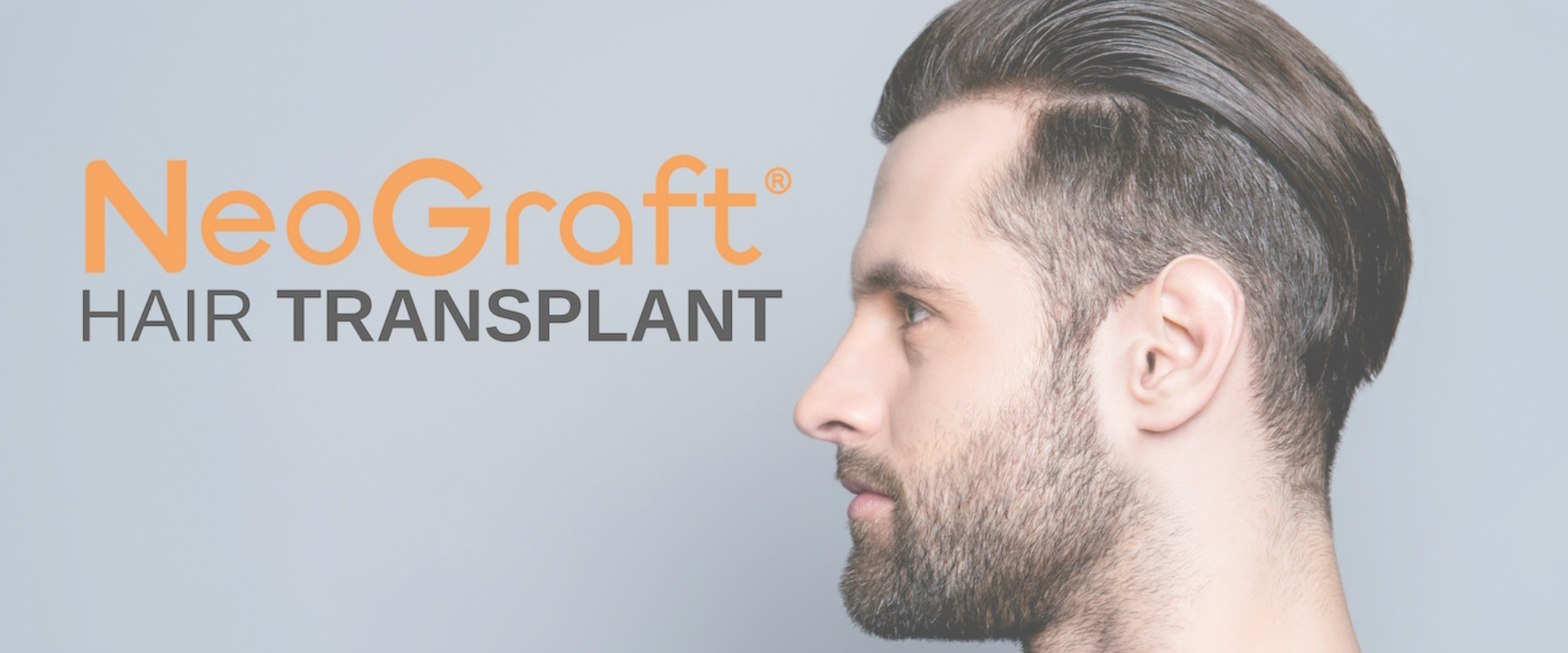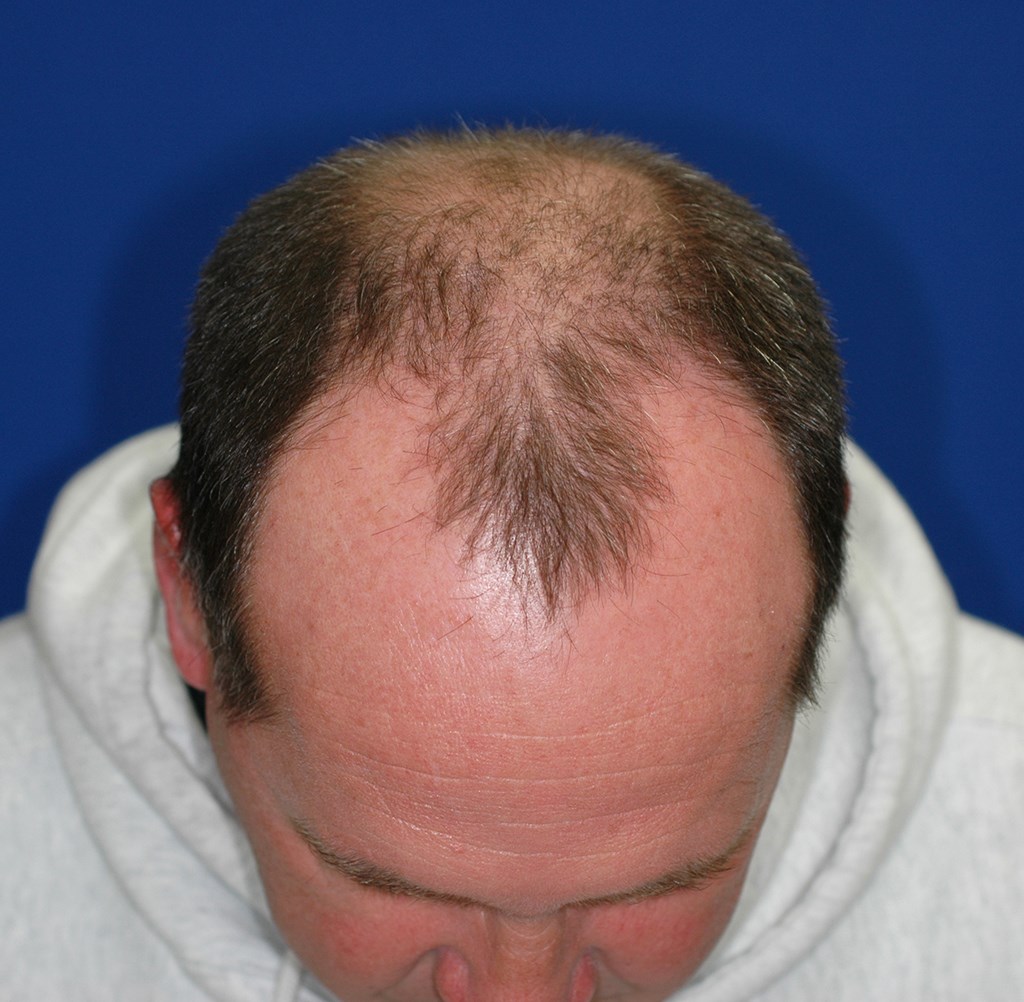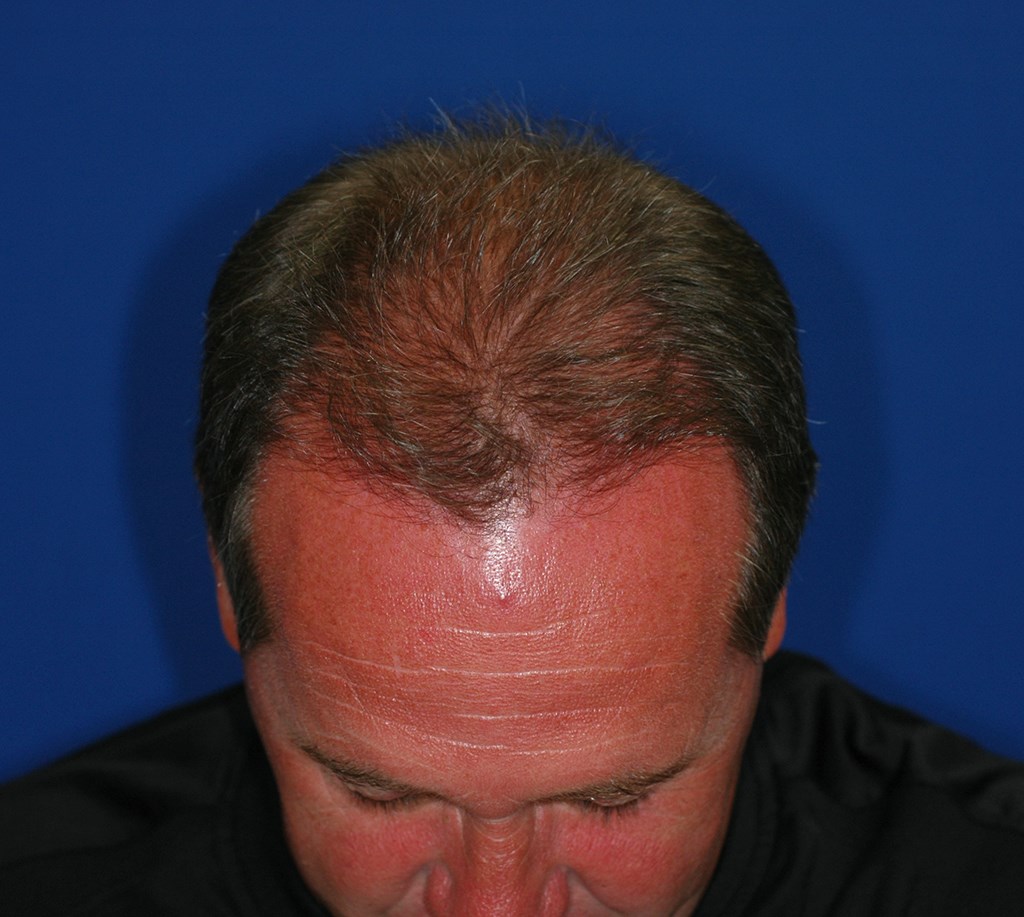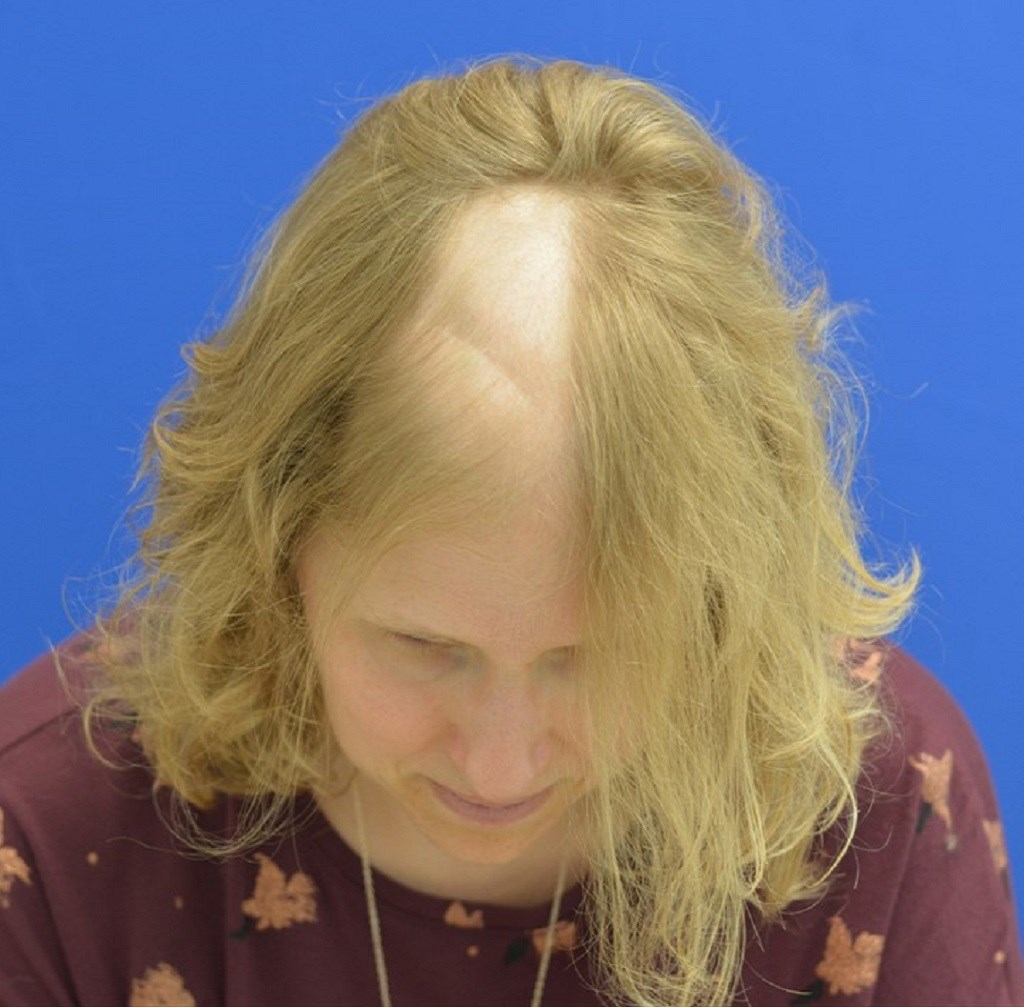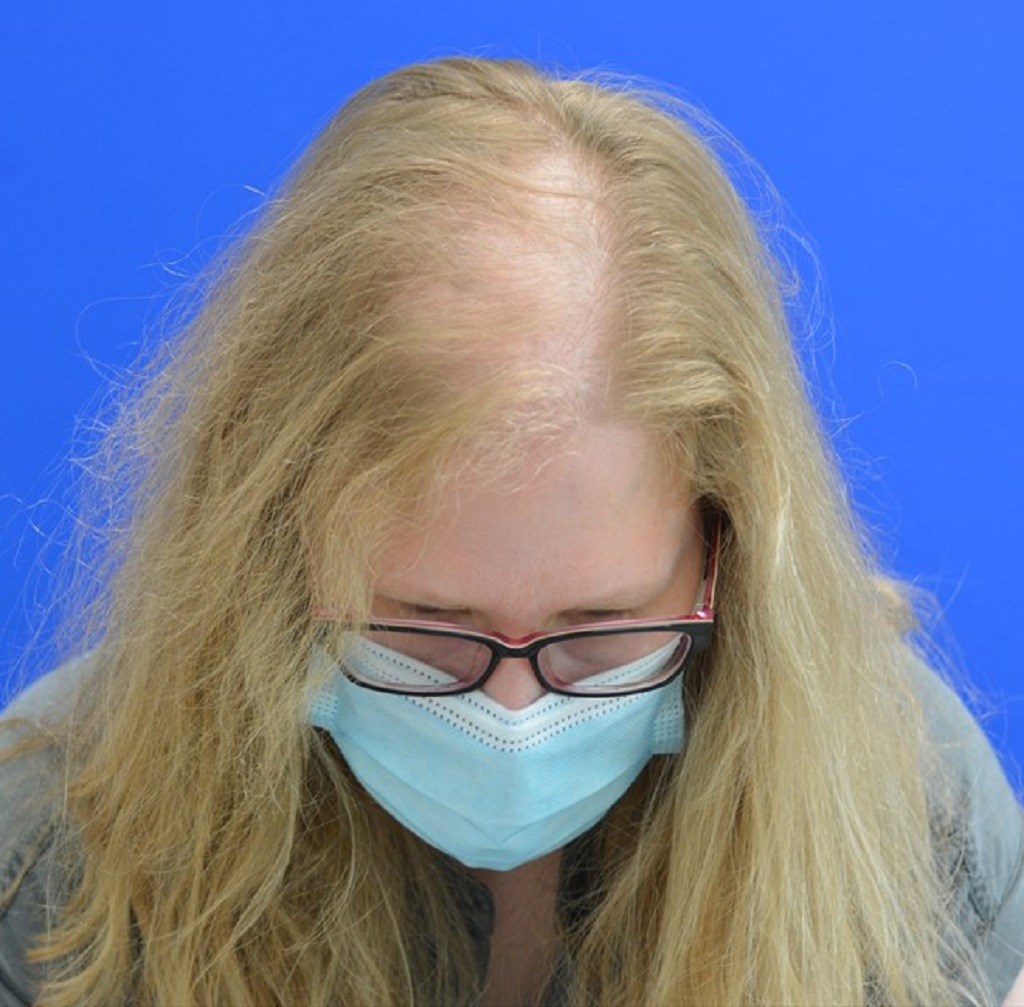About FUE with NeoGraft
NeoGraft Hair Restoration
NeoGraft is a method of Follicular Unit Extraction (FUE) hair restoration. It is the least invasive option for surgical hair restoration, allowing physicians to restore natural hair growth to large areas in a single treatment session without requiring scalpel incisions or sutures. Through NeoGraft FUE, Lewisburg Plastic Surgery patients can enjoy natural-looking hair without a linear scar or extensive recovery times.
How does NeoGraft work?
NeoGraft FUE is an FDA-cleared system that automates the surgical removal of individual hair follicles. This replaces the need to remove a large strip of hair follicles from the back of the scalp, a hair restoration method known as Follicular Unit Transplant (FUT) or strip hair restoration. FUE is a minimally-invasive option, and the automation of NeoGraft allows for the precision of individual hair follicle extraction without the time-consuming nature of traditional FUE methods. In addition, reduced procedure time means that the procedure is more affordable for patients compared to traditional FUE hair restoration. Using NeoGraft, physicians can create a natural-looking hairline with reduced scarring.
Candidates for NeoGraft
Patients who have some areas of balding or hair thinning with sufficient healthy donor hair are typically good candidates for NeoGraft. This can include both men and women who face balding or hair thinning. In addition, patients should be generally healthy overall. During a consultation, Dr. Normington will assess your hair loss and remaining healthy hair to determine whether you are a suitable candidate for the procedure.
Benefits of NeoGraft FUE
FUE transplants such as NeoGraft have several benefits compared to other hair transplant options. First, NeoGraft procedures tend to have reduced healing time and a more comfortable recovery period compared to FUT transplants. When healing is complete, it is easier for patients to wear short haircuts thanks to minimal visible scarring. In comparison, FUT transplants result in a linear scar at the donor site. Downtime is also reduced with NeoGraft, as patients require no stitches following the surgery. Finally, the procedure is more affordable on average.
The NeoGraft procedure
Like other methods of hair transplant, NeoGraft involves removing healthy hair follicles from a donor area, typically the back of the head, and placing them in balding or thinning areas. In a NeoGraft procedure, the system uses advanced technology to quickly remove the donor follicles and implant them to the treatment area. The advanced NeoGraft technology minimizes damage to hair follicles by smoothly removing them using controlled pneumatic pressure rather than twisting or pulling. This increases the overall success of the hair transplant procedure for improved results. Because NeoGraft transplants individual hair follicles, patients are left with more natural-looking results, avoiding unnatural “straight lines” of transplanted hair growth. Care is taken to create a natural-looking and flattering hairline.
Some degree of hair loss after NeoGraft is possible due to the natural aging process and other factors. Additional NeoGraft treatments or supplemental treatment options, such as Nutrafol supplements, Rogaine, or Propecia, may be recommended to help patients maintain healthy and full hair. During a consultation at Lewisburg Plastic Surgery, a customized treatment plan can be determined for your unique needs.
Patient FAQ
You may be wondering how to know if you’re a candidate for one of our procedures or the types of results to expect. Our comprehensive FAQ has answers to some of the most common questions you may want to ask.
Frequently Asked Questions
-
-
How do I know if I am a candidate?
Candidates for hair restoration surgery are those individuals with hair loss that have sufficient donor hair on the back of the scalp to transplant into the frontal balding areas. The best candidates are those men and women with only frontal or partial hair loss and with adequate donor hair. Dr. Normington will assess the amount of coverage needed to help give you the appearance you desire.
-
-
How is NeoGraft performed?
Hair transplantation is a process in which hair is taken from the back of the head and replaced in areas where hair loss has occurred. The NeoGraft device uses a special technology that is able to quickly remove the hair follicles from the back of the head and implant them to balding areas. NeoGraft uses a controlled pneumatic pressure to slide out the graft smoothly, so there is no pulling or twisting (which can risk damaging the graft.) Because the NeoGraft transplant is faster than other, out-of-date methods, the grafts can be re-implanted sooner, keeping them more robust and increasing the success of the grafting process.
-
-
What results can I expect?
Unlike the old fashioned “punch grafting” technique that often produces an altered texture or unnatural straight lines (corn row) of hair appearance, NeoGraft has dramatically improved the results of hair restoration surgery. Grafting sessions are designed to replace the lost hair, refine the thinning hairline and provide a healthy and natural appearance. Results will vary depending upon your personal level of baldness.
-
-
How soon will I see results?
The science behind grafting is quite simple. Hair follicles are taken from the hair at the back of the head that is genetically programmed to continue to grow. The follicles that hold your transplanted hair are living tissues that grow cyclically. Like normal hair growth, transplantation is an ongoing process that requires a commitment of time. Once the hair follicle has been implanted into the balding area, the grafted hair should stay in place for about two to three weeks before shedding. After shedding, the new growth should begin in 3-4 months; this is normal and is an important part of the new hair growth process. After that time period, the hair should continue to grow normally; your result should look healthy and natural.
-
-
How long will it last?
Most men start to develop male pattern baldness at approximately 40-45 years of age. For women, they may reach the age of 55-60 before their balding pattern manifests. Hair that is transplanted from the back of the head should maintain its longevity. Hair loss does not stop after a transplantation. Some people will need continuing maintenance, and further treatments may be required, particularly if your balding patterns continue with age. Progressive hair loss or the desire for more density may require more transplants. An estimate of balding pattern and the number of procedures needed will be discussed during your consultation.
-
-
What are my other treatment options for hair loss??
Rogaine and Propecia are the only drugs approved by the FDA to treat pattern baldness (hair loss resulting from hereditary causes). These treatments can reduce further hair loss, but cannot restore lost hair. Dr. Normington can discuss if these treatments are right for you.
Rogaine (topical minoxidil) is a topical solution that is applied by directly rubbing it onto the scalp where hair growth is desired. Only about 10% to 14% of the people who try this lotion experience hair growth. However, Rogaine lotion can help to slow hair loss.
Propecia (finasteride) is the first pill that can treat male pattern hair loss. Like all prescription products, it should be given under a doctor’s care. While it is effective, if treatment is discontinued, results may not be maintained.
-
-
What is the downside to FUE?
FUE hair transplantation requires that the donor site hair must be short in order to harvest the hairs which will be transplanted. If you have long hair, Dr. Normington can determine if the donor area can be hidden. In a given area, not all the hair is transplanted, so the remaining hair will grow in and fill the area naturally.
-
-
Why don’t all hair transplant doctors use FUE?
Those doctors have not invested in the technology that might improve their patients’ results.
-
-
What about Robotic Hair Transplantation?
Dr. Normington has evaluated the ARTAS robotic hair transplant system and is pleased that it uses FUE. The doctor does not believe that the FUE harvesting results are better than his experienced team using Neograft, and does not believe that the increased costs of the robot are of any benefit to his patients


